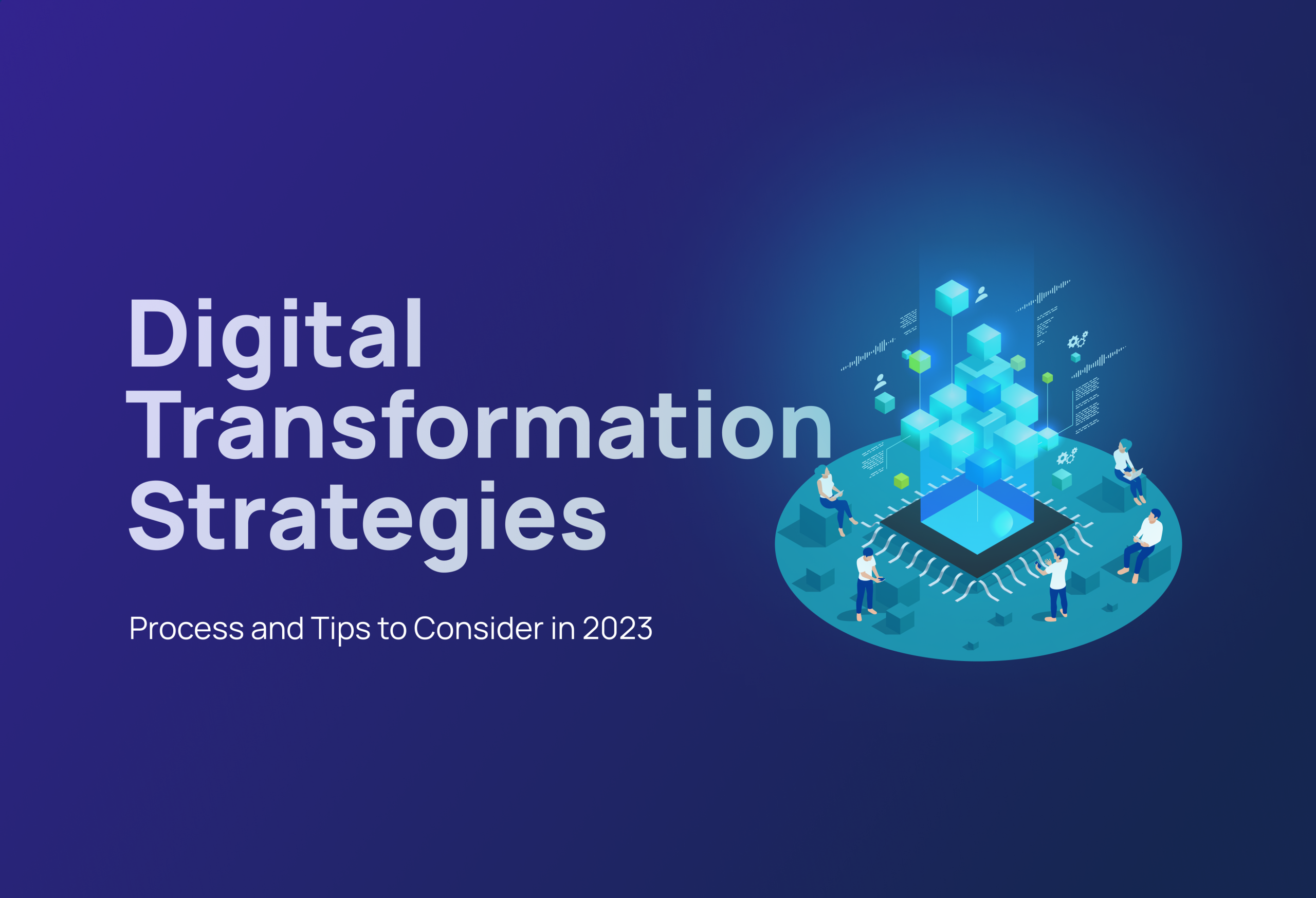New IT technologies have been taking over the world by storm. Nowadays, more than ever, companies are willing to push the boundaries with groundbreaking digital innovations. These innovative approaches help with progress in their business and offer opportunities for the digital economy. Through this post, we’ll discuss all about digital transformation (DX) for your business, each Digital Transformation Strategy 2023, and explain how to create an effective digital transformation strategy that suits your business.
How do you define digital transformation?
Digital transformation is the use of digital technologies to redesign a company’s workflow in order to boost efficiency through the use of the digital economy. Typically, this comprises the implementation of AI, big data, and IoT. It’s important to note that the business culture has also drastically changed. Nowadays, companies are willing to incorporate changes into the way they do business. Internal procedures, company models and strategies, and the customer experience are all subject to change. This is why businesses’ productivity rises and they get much more competitive.
The pandemic has influenced the market to make many changes. Due to this, companies need to adapt to any interruption of the production process or alterations in client requirements. Because of unpredictable circumstances, the employment of technologies has now become a requirement. Top performers in various industries recognise the true value of digital transformation and recognise the importance of ongoing change. These top companies influence other businesses to follow the trends set by them.
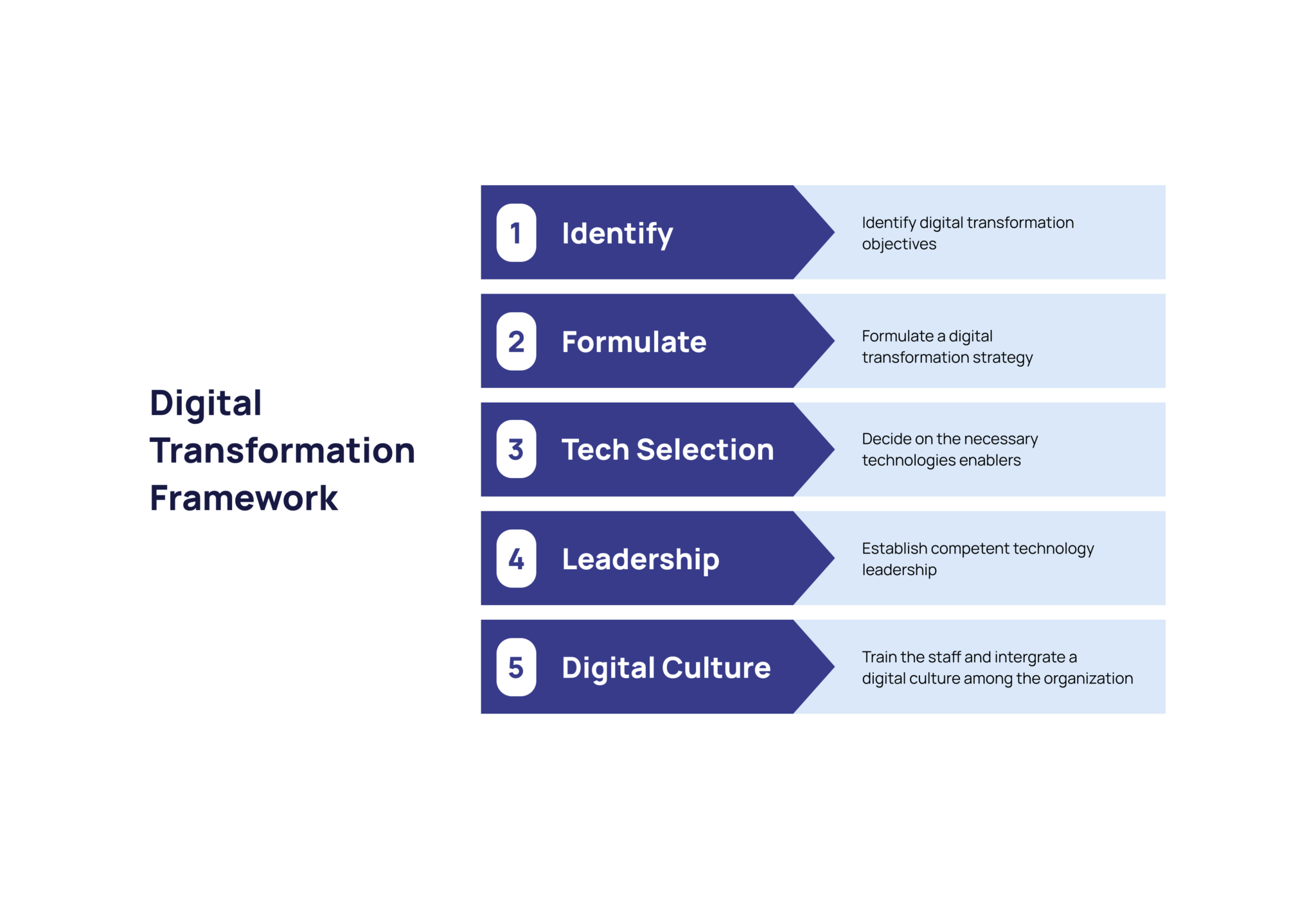
What’s the benefit of digital transformation?
There are numerous reasons why firms would wish to experiment with digital transformation in order to stay competitive in their sector. Here are the benefits of going for digital transformation:
1. It assists you with resource allocation
DX assists you in consolidating all of your assets. When your resources are not distributed at random but are consolidated in one location, it substantially simplifies the administration process and increases the security of personal data. The novel technique connects apps, programmes, and databases so that their operations are coordinated and in sync with one another.
You can expect better data aggregation
Data that is disorganised is useless, and it only becomes valuable when it is well structured. It is now ready for analysis and processing, from which insights for enhanced decision-making can be derived. Furthermore, digital transformation improves the confidentiality of sensitive data and aids in the protection of clients from cyberstalking.
3. You get to understand customers better
You can gain a deeper understanding of client wants and preferences by conducting extensive data analysis. Based on the dynamics of client activity and preferences, you may create your future marketing strategy and alter it in response to any changes that may occur over time. Personalisation and adaptability are essential for developing more client-focused strategies and increasing profit.
4. It helps you to improve the customer experience
Digital transformation helps businesses improve their customer experience (CX). CX is one of the key areas that businesses focus on in order to outperform their competitors. Cutting-edge digital services, improved communication tools, and trouble-free website performance make it easier to capture clients’ hearts.
5. It’s beneficial for the workplace
DX promotes creativity in the organisational culture by providing teams with effective tools for improved collaborative efforts. All employees have access to trustworthy communication channels. Companies that promote continuous training and education embrace technological change and innovation for enhanced productivity and revenue growth.
6. You can expect productivity improvements
When you implement digital transformation in your firm, you will see immediate improvements in productivity and sales. This is due to workflow improvement, better resource allocation, and an improved marketing approach based on detailed data analytics.
7. It can increase industrial capacity
Workflows can be considerably rationalised and modernised when digital instruments work in concert. As a result, you will have processes that are more effective thanks to technological advancements that support digital transformation.
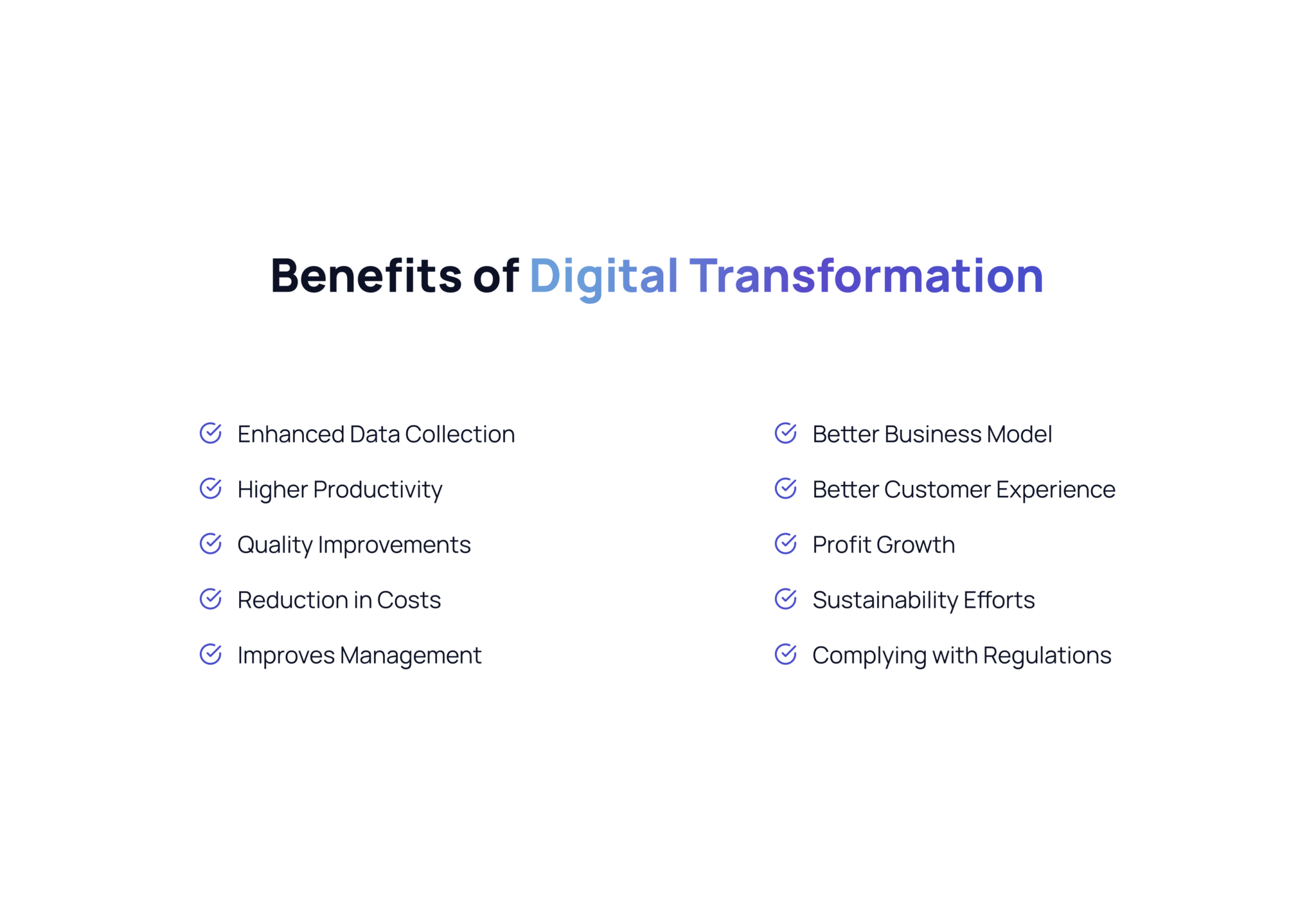
Digital Transformation Strategy 2023: Essential Tips for Creating a Digital Transformation Strategy
DX is more than merely implementing cutting-edge technologies and investing in pricey equipment. Most importantly, it is a widespread movement in consciousness towards innovation and new business practices. It entails a number of significant steps. Let’s start with the primary areas in which you should gain a deep understanding before you begin developing your digital strategy. To ensure seamless transformation processes, you must be aware of the potential benefits and potential cons of each innovation, make well-considered judgements, and make sure to implement all necessary changes as quickly as possible. When businesses lack a clear understanding of the processes that occur throughout the transition, they are unable to define priorities and solve emergent challenges.
Comprehensive data analysis is another crucial component that will give you helpful insights on important steps. While digital transformation is a constant and lengthy process, it will have a significant impact on your business and result in significant metamorphoses demanding timely changes. Knowing everything mentioned above, you can begin developing your own plan. Here are the most important questions you need to ask yourself:
1. Is everyone on board?
Before you begin developing a digital transformation strategy, ensure that all stakeholders are on the same page and prepared for the move. This phase should not be overlooked because the change will affect all aspects of the business and all areas of activity; therefore, ensuring that all players are aware of the processes and what they need to accomplish is essential.
2. Do you have the resources?
The next stage is to determine how much money you can dedicate to implementing innovation. Remember that this is a long-term project that will have an impact on all of your employees and clients. As a result, budget creation is critical in order to develop a prudent management policy that ensures equal resource distribution across all areas of activity.
3. How does your company perform currently?
The core of your strategy is an accurate assessment of how your organisation now performs. Cultural differences, personnel skills, organisational structure, existing development opportunities, as well as limits and disadvantages that can throw a wrench in the works, should all be considered.
4. Are you clear about your goals?
The next step is to identify your digital transformation objectives: what you hope to achieve for your company, employees, and clients in the long run. It is also beneficial to divide your goals into short-term and long-term goals and to set a time frame for achieving them.
5. What do you need to achieve your goals?
It’s time to define what needs to be done to achieve the business’s transformation goals. It could be purchasing new machinery, hiring new employees, offering training and teaching, implementing new processes, or experimenting with new technologies.
6. What’s the plan?
Once all of the previous processes have been completed, it is easy to identify the major goals and develop a plan to attain them. Determine the major areas of attention, the tools and resources, the relevant parties, and the time restrictions. Remember that the plan should be adaptable and open to modifications.
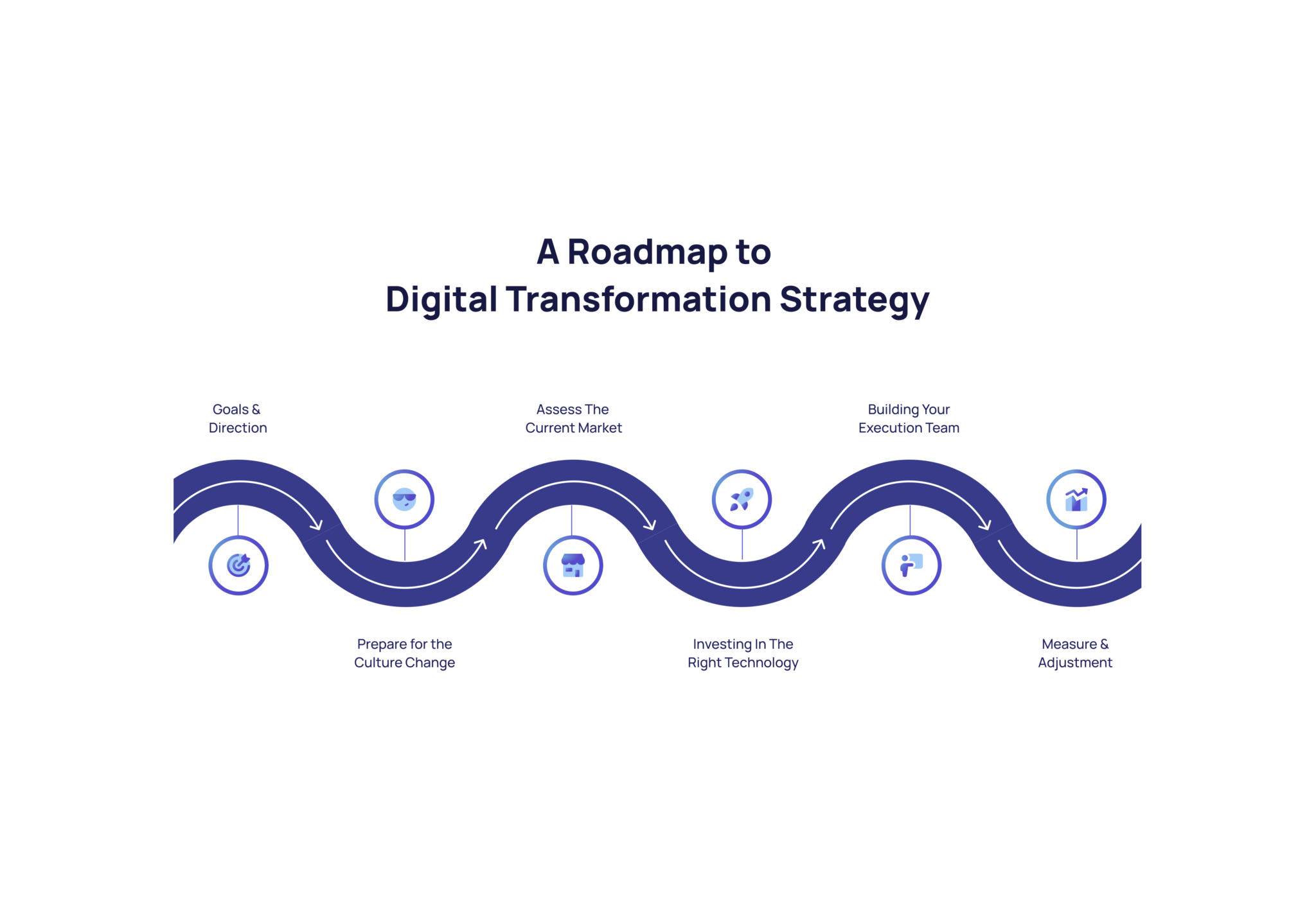
What are the possible obstacles to the digital transformation plan?
As we mentioned previously, you can create an elaborate digital transformation plan. However, it does have its obstacles that you need to know about. Here are some potential issues that you may have to tackle:
1. Lack of skills
You would agree that it’s necessary to have good enough experience to carry out the smooth transition to new technologies. It can be an issue if the skills are insufficient.
2. Unwillingness to transform
Sometimes your staff or customers may not be onboard with the transformation, which can create disagreements and disputes.
3. Lack of research
You need to do in-depth research. A detailed study can assist you in saving money and making sound decisions based on the facts acquired.
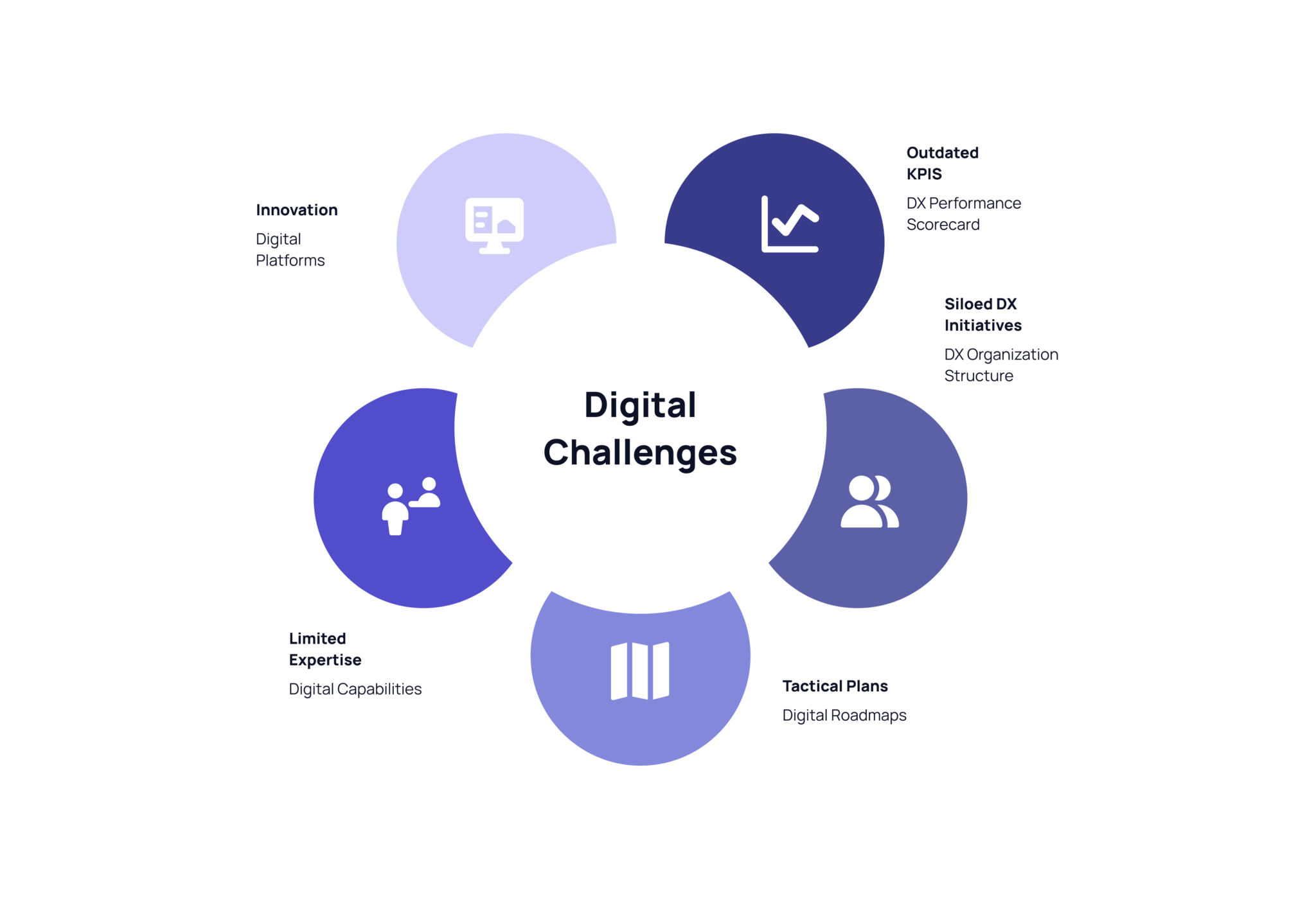
Digital Transformation Framework
The digital transformation framework serves as the foundation for how the company strategy can evolve in response to changing business conditions as a transition plan during times of change. Transformation processes might change from one firm to the next, depending on the demands of the business. Nonetheless, there are important pillars that all businesses can use to develop a progressive makeover approach. Here are the most useful components of the transformation framework:
- Improved management
- Organisational culture
- Agile working processes
- Flexible attitude to change
- Properly-trained human resources
- Usability of software
- Executive education
- Better customer service
- Aligned digitisation activities
Essentials of Digital Transformation
The process of digital transformation in any company requires:
1. Technology
Technology is a critical tool for creating a transparent and motivating digital culture in the workplace for your employees, as well as for developing an effective communication strategy and cooperation at all levels. There are numerous popular IT technologies available today that can tremendously help your organization. You can select the best programme for your specific needs and interests. Cutting-edge technologies, when properly adopted, can help decrease costs, optimize resource allocation, increase product quality, and drive more sales.
2. Skilled staff
Experienced and skilled employees are also critical to the success of the digital transformation. When it comes to the deployment of new technology, highly qualified employees are required for a successful approach. It would be tough to build trustworthy working methods based on the latest technological trends if you did not have adequate tech-savvy, skilled human resources. Another alternative is to hire qualified specialists on a temporary contract basis or to acquire fresh resources.
Why are these components important?
These components are crucial for a smooth transition to an effective business strategy.
The correct adoption of new technology, together with data-driven decisions and aligned workflows, is a crucial component of any digital transformation strategy. Finally, digitisation should reflect the evolution of the firm and result in the emergence of a digital culture that fits the needs of both clients and employees.
Unfortunately, many reputable organisations continue to rely on outdated, legacy software. They hold on to their old habits and are hesitant to modify their daily routine. This stifles progress in all areas of corporate growth and makes scaling and developing new channels for an effective marketing strategy difficult. Regardless, change is unavoidable. If you do not encourage development in the way you conduct business, you will most likely lag behind your competition within a year or so.
Each Key Digital Transformation Strategy 2023
Let’s discuss every digital transformation strategy for 2023:
1. Importance of Substantial Investment in Digital Transformation
One of the main strategies for digital transformation in 2023 is related to the importance of substantial investment in DX. Organisations that actively engage in digitising their infrastructure have revolutionised their business approach and seen significant results. Any company that innovates in management strategy, data processing, cybersecurity, and other areas will surely have a competitive advantage over its competitors and will likely outperform them.
Managers place a special emphasis on optimising recruitment processes in order to attract highly educated individuals capable of implementing these advances efficiently.
2. Advantages of Thoroughly Focused DX
Usually, when a company makes the ultimate decision to allow changes in their digital environment and improve their existing infrastructure, they may face challenges right away. First and foremost, they must efficiently address the issue of where to begin. Many industrial businesses prefer to make adjustments in multiple areas at the same time. They will encounter challenges such as the difficulty of scaling their capacities, which will hinder the potential for a long project lifespan.
Unfortunately, most businesses do it intuitively without a clear strategic strategy, which is ultimately unproductive. To forestall such unwanted outcomes, it’s best to define the major areas of digital transformation strategy from the very start. When you have a sharp focus, you will concentrate only on the most noteworthy areas and free your mind of unnecessary hustle and disorientation.
3. Employee Digital Experiences
Another digital transformation strategy for 2023 is related to employees. In recent years, employees have expressed a strong desire for the ability to combine two forms of work: in the office and from home. The pandemic has compelled businesses to allow their employees to operate in a flexible dual mode. This has highlighted the importance of acquiring appropriate gear and software, better resource allocation, and a well-thought-out management approach. AR, AI, ML, and cloud technologies, which have recently evolved, greatly enable the smooth implementation of these developments.
4. Expansion of Generative Artificial Intelligence
When discussing the Digital Transformation Strategy 2023, we cannot miss out on the expansion of generative AI. This is an ML strategy that entails examining data about the target concept and then creating a whole new, unique artifact based on the received and evaluated information. This option is already included in the available program and will be improved to better meet the needs of customers in the near future. Gartner predicts that in the future, generative AI will generate ten times the amount of data that is currently produced.
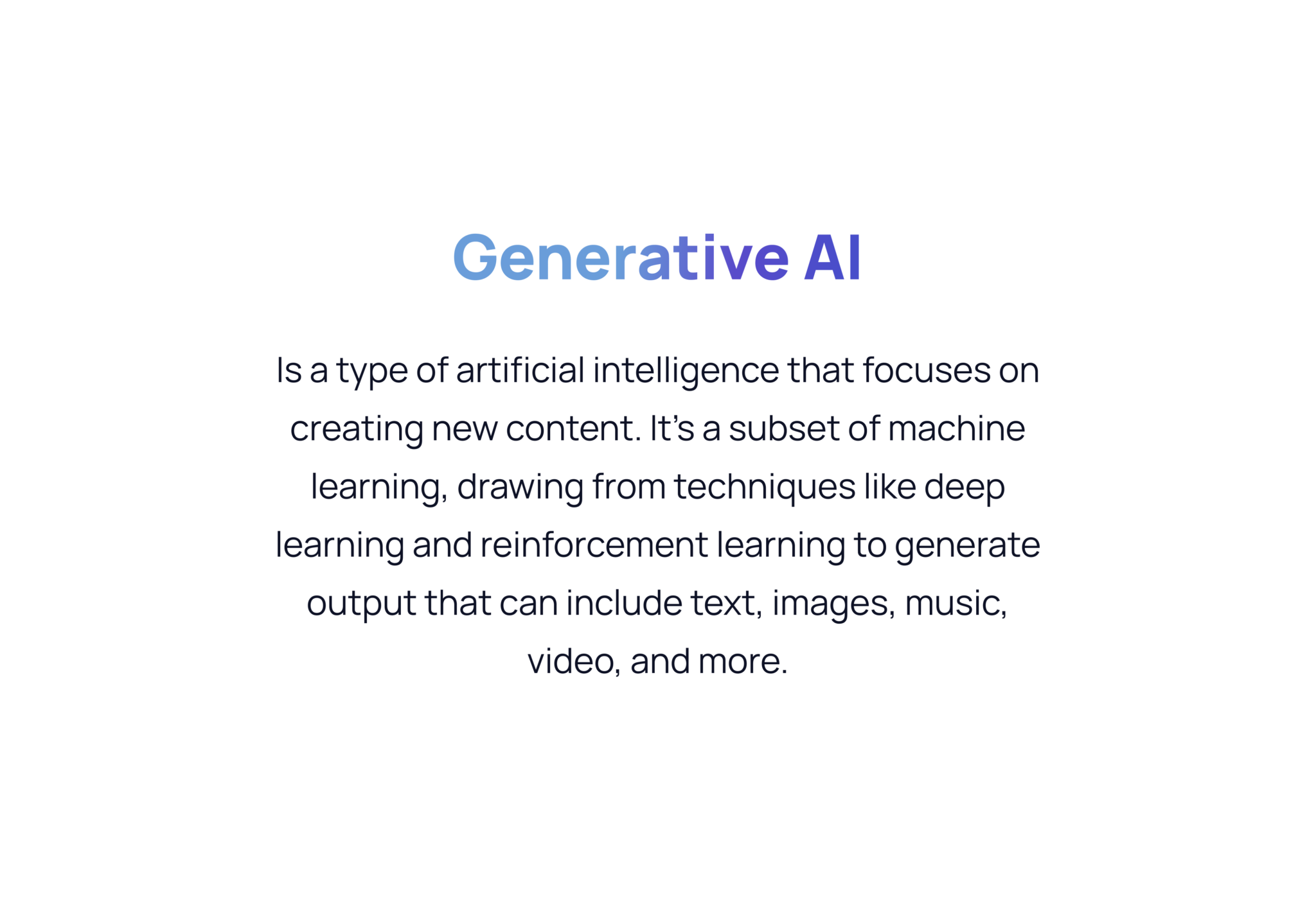
ML is making good progress right now, and the industries that employ it are thriving. With this technique, software engineers can quickly repeat solutions on a regular basis. The computer “brain” assists in making new decisions in a wide range of fields, from smart cities to space navigation. The impact of machine learning (ML) in engineering and industrial manufacturing will rise tremendously in the future.
5. Quick Adaptation to Change and IT Infrastructure Customization
As you know, COVID-19 has, of course, altered the way things function. Companies have been obliged to develop new ways and attempt new things in the fields of management, resource allocation, communication, and workflow optimization due to the world’s constantly changing epidemiological environment. That is why, in order to handle today’s challenges, it is critical for IT service providers to guarantee they can quickly adapt to changes. Plus, a unique method must be developed so that the company’s software infrastructure is matched with the specific needs of the business and its customers.
How do you check if your digital transformation is a success?
To ensure that your digital transformation is successful, you need to discover applicable instruments capable of displaying your actual results for the provided time period. Plus, it will assist you in analyzing your accomplishments and, if necessary, adjusting your approach, both in terms of customer service and internal corporate operations.
It is critical to quantify your results using a specifically defined KPI that is obvious and apparent to all parties involved. First and foremost, you should take a holistic approach and keep track of all your investments in digital transformation, as well as be willing to take the required risks during times of transition. Then, use the most efficient techniques to examine your digital transformation approach. Consider recommended practices for digital transformation metrics next.
- Incorporate business outcomes: consider the strategic impact, operational impact (such as productivity increases, scale, and operational savings), and cost impact.
- Keep a standard way of measuring.
- Create a hierarchy of metrics and more detailed sub-metrics to clearly understand the bigger plan.
- Introduce the results for your business: Investigate the effect strategically, taking into account characteristics such as the growth in revenues, the speed with which the product is released to consumers, how the operational efficiency of workflows was enhanced, and the long-term cost-effectiveness of production.
How Do You Start Your Digital Transformation Process?
Digital transformation is a continuous process, not a single event that occurs in an instant. Companies should not rush the transition process but rather focus on excellent strategy and a consistent approach to the gradual implementation of changes.
What do you need for success in DX?
- Experienced decisionmakers
- Constant education of employees involved
- Laying the groundwork for change
- Clear communication
- Streamlined administrative processes
You should not neglect any of these criteria for effective digital transformation. All of these aspects make it easier to implement digital advances in the organization. Digital transformation is a multifaceted process. You can choose to upgrade the back end with cloud solutions and improve your company’s infrastructure, or you can work with the front end and improve, for example, the user interface and user experience on your website.
Other alternatives include modifying the structure to incorporate digital elements such as sensors and actuators from the Internet of Things network, enhancing the data ecosystem with Big Data, shifting storage to the cloud, attempting to incorporate artificial intelligence, machine learning, and additive manufacturing, and constructing a robust infrastructure with high capacity. Adding an interactive option for your clients, such as a chatbot or the ability to book and pay for a service online, is a major step towards technological progress.
Wrapping up
Through this post, we discussed all about every digital transformation strategy for 2023 and how to implement them in your company. A good strategy is a confluence of changes that occur both within the organization and in client communication. In any case, it’s critical to remember that the end goal is to optimize workflows, increase productivity, and create more value for your organization, not only to embellish your daily routine with complex equipment.
A well-planned and well-executed strategy is required to maximize the benefits of digital transformation. It’s important to note that DX is a game-changer for many top businesses. So, make sure to consider the plan and determine how best to capitalize on it.

